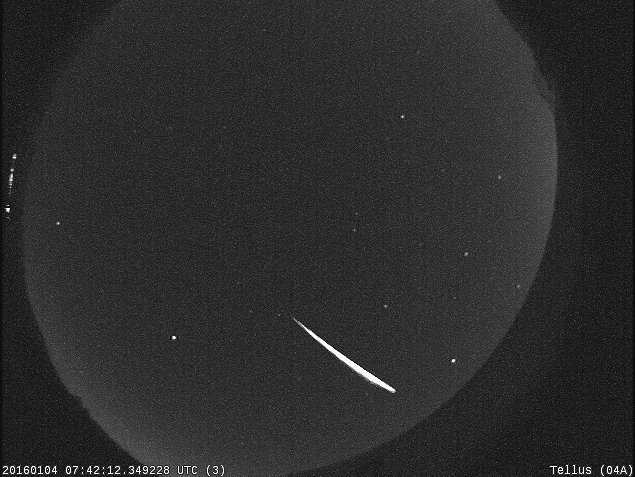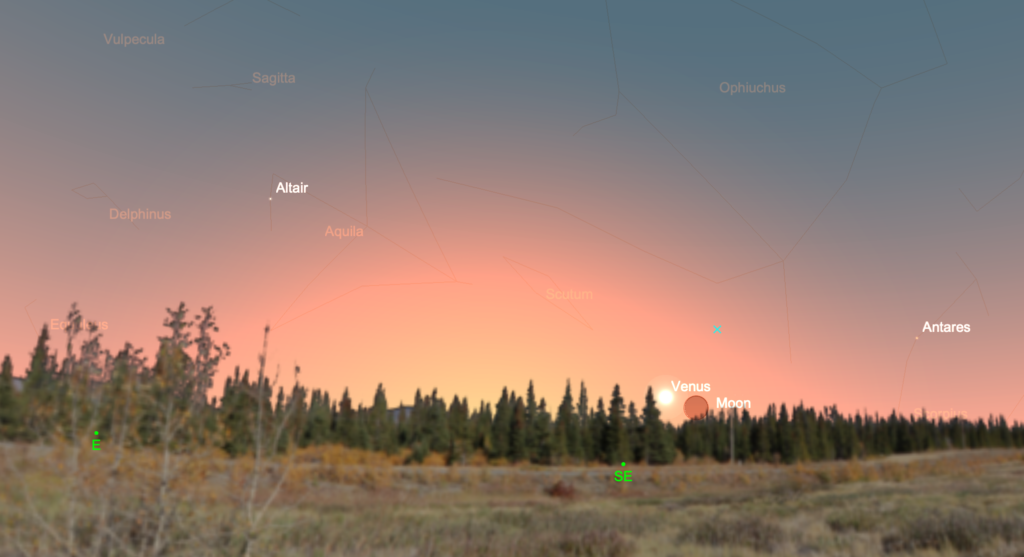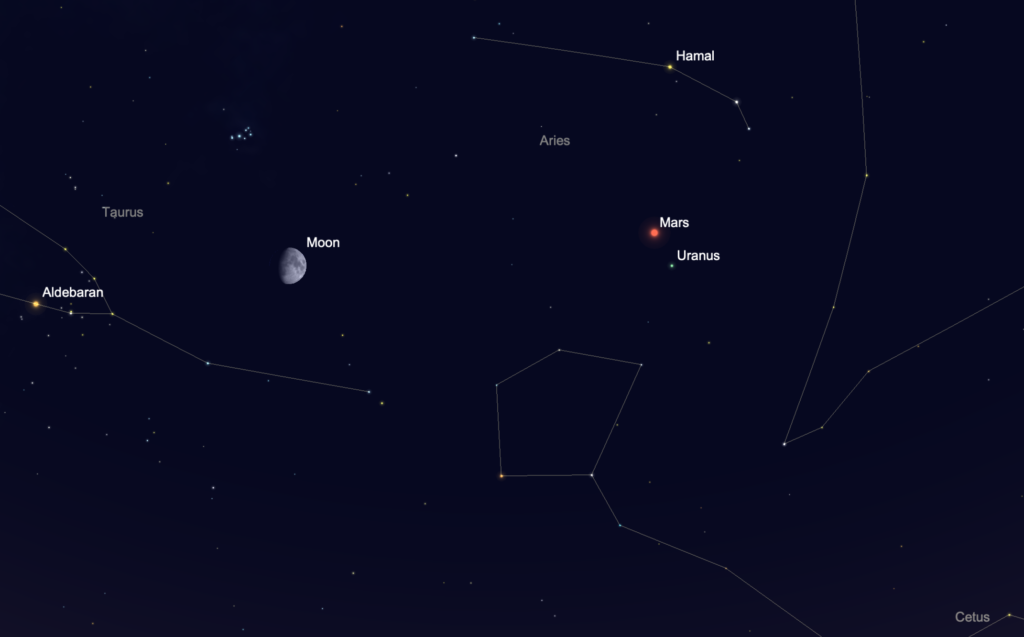
Happy New Year! Hope is not a strategy, a wise man once said, but here’s hoping anyway that this year will be better than the last. It certainly starts in a promising fashion for skywatchers as the year dawns with a meteor shower, Jupiter and Saturn lingering in the southwestern sky, and Mars marching across the evening sky on its way to a conjunction with Uranus as it slowly dims. Here’s what to see in the night sky this month…
2 Jan. Earth reaches perihelion, its closest approach to the sun. Today it’s 147,093,162 km from the sun as measured center-to-center. That’s about 3% closer than at aphelion in early July.
3 Jan. The Quadrantid meteor shower peaks. Named after the defunct northern constellation Quadrans Muralis near the modern-day constellation Bootes, this brief but sometimes active meteor shower can feature more than 100 meteors per hour under optimum conditions. This year a waning gibbous Moon obscures the faintest meteors. But if you’re up before dawn on January 3, it’s worth spending some time looking. Quadrantids can appear anywhere in the sky and their paths trace back to a point just north of the star Arcturus which is visible in the northeastern sky in the pre-dawn hours. The predicted time of the peak of the shower is 15h Universal Time which favors observers in the Eastern Hemisphere.
6 Jan. Last Quarter Moon, 09:37 UT
10 Jan. Look for Mercury, Jupiter, and Saturn gathered in a tight triangle less than three degrees across. The three planets are plenty bright but they’re all low in the southwest after sunset and just 13 degrees from the Sun. You’ll need binoculars and a clear view down to the southwestern horizon.

11 Jan. Look for the Moon and Venus in the early morning sky. The two are separated by just 1.5° in the brightening twilight low above the southeastern horizon.
13 Jan. New Moon, 05:00 UT

14 Jan. They both had splendid apparitions in 2020, as well as a once-in-four-centuries conjunction last month, but Jupiter and Saturn, now sink lower each night in the southwestern sky.
Tonight, just after sunset, look for these two planets along with a very slender crescent Moon and tiny Mercury in a shallow arc about 15 degrees long. This would usually be a spectacular display, but tonight all four objects are somewhat obscured by bright twilight. At magnitude -1.9, Jupiter is the brightest of the three while Mercury shines at magnitude -0.9. Saturn, the rightmost and lowest of the planets, shines at magnitude +0.6 and presents the greatest challenge to see, even in binoculars.
20 Jan. First Quarter Moon, 21:02 UT

22 Jan. Mars passes about 1.7o north of Uranus. Both planets easily fit in the same field of view of binoculars. Still fairly bright at magnitude +0.3, Mars far outshines 6th-magnitude Uranus. A look through a telescope with a suitably wide field of view offers a study in planetary colors with ochre-colored Mars contrasting the pale grey-green of Uranus. The disk of Mars spans 8.5 arc-seconds while Uranus appears just 3.6 arc-seconds across. This month, Mars shines as bright as it will for all of 2021.
23-24 Jan. Mercury reaches greatest eastern elongation about 19o from the Sun. The planet shines in the southwestern sky after sunset at magnitude -0.7, unattended by any other bright celestial body in the twilight glare. A pair of binoculars enhances the view. The planet is much lower over the horizon in the northern hemisphere, while southern skywatchers see the planet a little higher. After today, the planet appears to move quickly towards the Sun each night on its way to inferior conjunction on February 8.
28 Jan. New Moon, 19:16 UT